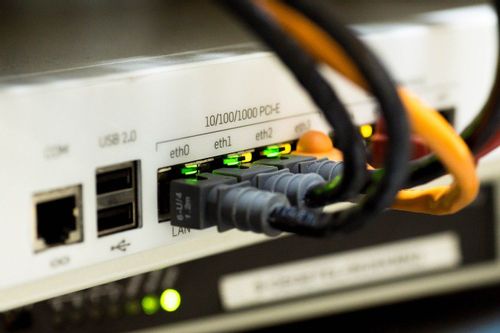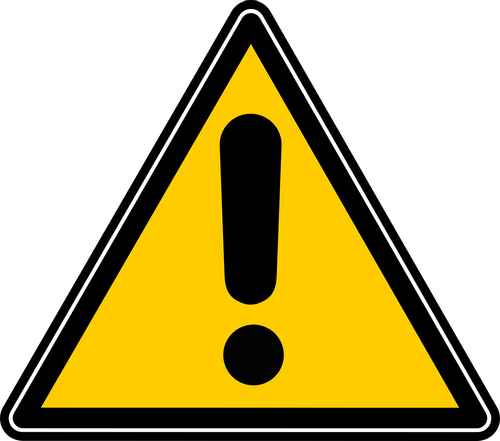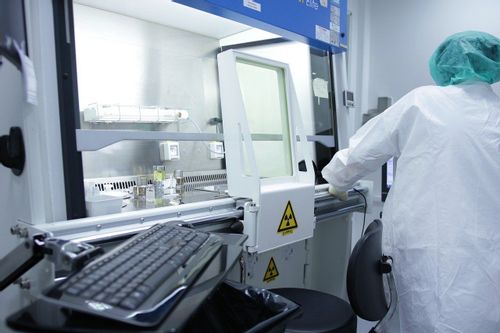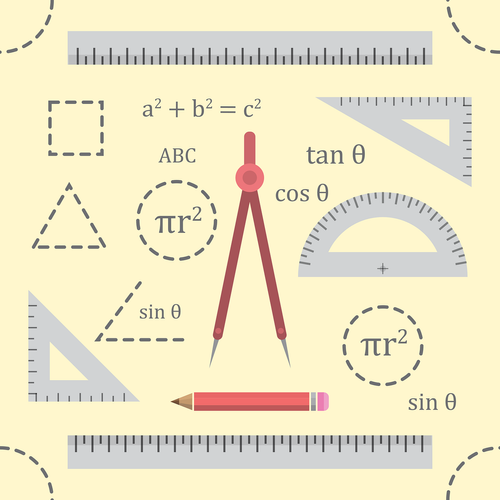Standards Packages
iTeh together with SIST has developed and compiled a comprehensive collection of standard packages to support your standard requirements. Our packages cover an array of content that includes quality management, risk management, road vehicles, machine safety, and much more. With over 200 packages to choose from, you are sure to find a collection to suit your standard needs.
Latest Standards
This document specifies methods for the determination of major and minor element concentrations in solid recovered fuels after digestion by the use of different acid mixtures and by addition of a fluxing agent for solid recovered fuel (SRF) ash.
a) Method A: Microwave assisted digestion with hydrochloric, nitric and hydrofluoric acid mixture (6 ml HCl; 2 ml HNO3; 2 ml HF) followed by boric acid complexation;
b) Method AT: Microwave assisted digestion with hydrochloric, nitric and tetrafluoroboric acid mixture (6 ml HCl; 2 ml HNO3; 4 ml HBF4);
c) Method B: Microwave assisted digestion with hydrochloric, nitric and hydrofluoric acid mixture (0,5 ml HCl; 6 ml HNO3; 1 ml HF) followed by boric acid complexation;
d) Method BT: Microwave assisted digestion with hydrochloric, nitric and tetrafluoroboric acid mixture (0,5 ml HCl; 6 ml HNO3; 2 ml HBF4);
e) Method C: Microwave assisted digestion with nitric acid, hydrogen peroxide and hydrofluoric acid mixture (2,5 ml H2O2; 5 ml HNO3; 0,4 ml HF) and optional boric acid complexation;
f) Method CT: Microwave assisted digestion with nitric acid, hydrogen peroxide and tetrafluoroboric acid mixture (2,5 ml H2O2; 5 ml HNO3; 0,8 ml HBF4);
g) Method D: Digestion of the ashed SRF sample with fluxing agent lithium metaborate in an oven at 1 050 °C.
This document is applicable for the following major and minor/trace elements:
— Major elements: aluminium (Al), calcium (Ca), iron (Fe), potassium (K), magnesium (Mg), sodium (Na), phosphorus (P), sulfur (S), silicon (Si) and titanium (Ti).
— Minor/trace elements: arsenic (As), barium (Ba), beryllium (Be), cadmium (Cd), cobalt (Co), chromium (Cr), copper (Cu), mercury (Hg), molybdenum (Mo), manganese (Mn), nickel (Ni), lead (Pb), antimony (Sb), selenium (Se), tin (Sn), thallium (Tl), vanadium (V) and zinc (Zn).
Method A is applicable for general use for SRF and ashed SRFs, but the amount of the test portion can be very low in case of high concentration of organic matter. Method AT can be used if an alternative to HF is necessary.
Method B with a higher volume of nitric acid is applicable for SRFs with high organic matter (e.g. suitable for high plastic content) that can be difficult to digest with less nitric acid or as a substitute for method A if appropriate equipment is not available. Method BT can be used if an alternative to HF is necessary.
Method C with combination of nitric acid and hydrogen peroxide and addition of hydrofluoric acid is applicable for wood based SRFs (e.g. demolition wood) or when there is a need for comparability to solid biofuel standards. Method CT can be used if an alternative to HF is necessary.
Method D is specifically applicable for determination of major elements in ashed SRF samples.
XRF can be used for the analysis of major elements (Al, Ca, Fe, K, Mg, Na, P, S, Si, Ti) after ashing (815 °C) of the samples and several major and minor/trace elements in SRF can be analysed by XRF after suitable calibration provided that the concentration levels are above instrumental detection limits of the XRF instrumentation and after proper preliminary testing and validation.
Digestion methods with HF and subsequent boric acid complexation or application of method D are applicable for determination of Si and Ti (better digestion efficiency).
Alternative digestion methods can be applied, if their performance is proved to be comparable with those of the methods described in this document.
- Standard92 pagesEnglish languagesale 10% offe-Library read for1 day
DEN/ERM-TGUWB-627
- Standard49 pagesEnglish languagesale 15% off
- Standard49 pagesEnglish languagesale 15% off
- Standard49 pagesEnglish languagesale 15% off
- Standard49 pagesEnglish languagesale 10% offe-Library read for1 day
This document specifies a method for determination of the mechanical durability of pellets. The mechanical durability is a measure of the resistance of compressed fuels towards shocks and/or abrasion as a consequence of handling and transportation.
- Standard14 pagesEnglish languagesale 10% offe-Library read for1 day
This document specifies the requirements and test methods for temporary edge protection systems for use during construction or maintenance of buildings and other structures.
This document applies to edge protection systems for flat and inclined surfaces and specifies the requirements for three classes of temporary edge protection.
For edge protection systems with an arrest function (e.g. falling or sliding down a sloping roof) this document specifies requirements for energy absorption.
This document includes edge protection systems, some of which are fixed to the structure and others, which rely on gravity and friction on flat surfaces.
This document does not provide requirements for edge protection systems intended for:
— protection against impact from vehicles or from other mobile equipment,
— protection from sliding down of bulk loose materials, snow etc,
— protection of areas accessible to the public.
This document does not apply to side protection on scaffolds according to EN 12811 1 and EN 1004 1.
NOTE This does not prevent these systems to be used on temporary structures.
- Standard54 pagesEnglish languagesale 10% offe-Library read for1 day
This document specifies guidelines for a use of social media in emergency management. It gives
guidance on how to use social media before, during and after an emergency and how social
media can support the work of emergency services. On the one hand, these guidelines are directed to
authorities (governmental as well as nongovernmental organisations) involved in emergency management.
On the other hand, they are directed to citizens who want to use social media in emergency
situations.
These guidelines shall help social media users to use these new media as efficiently as possible.
- Standard24 pagesEnglish languagesale 10% offe-Library read for1 day
This European Standard deals with the safety of
- portable heated carpets;
- heated carpets and similar appliances;
- heating units to heat the room in which they are located and that are intended to be installed directly under materials used as a removable floor covering such as carpet, cushion vinyl, or loose laid laminate, their rated voltage being not more than 250 V for single-phase installations and 480 V for other installations, including direct current (DC) supplied appliances.
- Amendment4 pagesEnglish languagesale 10% offe-Library read for1 day
This European Standard deals with the safety of electric commercial amusement machines and personal service machines, their rated voltage being not more than 250 V for single-phase appliances and 480 V for other appliances. Examples of appliances that are within the scope of this standard are: amusement machines; tables; bowling machines; dartboards; driving simulators; gaming machines; kiddie rides; laser shooting appliances; pinball machines; video games; personal service machines; card re-value machines; currency dispensers; luggage lockers; weighing machines; shoe shining appliances. As far as is practicable, this standard deals with the common hazards presented by appliances that are encountered by users and maintenance persons
- Amendment4 pagesEnglish languagesale 10% offe-Library read for1 day
This document specifies a method to determine the influence of site-applied cement based materials and associated non-cement based products/materials (including pre-packaged mortars) on the odour, flavour, colour, turbidity and total organic carbon (TOC) of test waters after contact with the products.
This document is applicable to site-applied or site-formed cement based materials intended to be used for the transport and storage of water intended for human consumption, including raw water used for the production of drinking water. It is also applicable to individual constituents of cement based products/materials and to associated non-cement based products/materials.
Site-applied or site-formed cement based materials which cannot be cast as cubes or prisms e.g. some spray applied systems, should be tested as factory made cement based products according to EN 14944−1.
NOTE Tests with the specified test water will not necessarily be representative of materials used in different kinds of waters and especially very soft waters.
- Standard56 pagesEnglish languagesale 10% offe-Library read for1 day
This document gives guidance and requirements for the assessment of conformity of compounds/formulations, products, joints and assemblies in accordance with the applicable part(s) of EN 14758 intended to be included in the manufacturer’s quality plan as part of the quality management system and for the establishment of certification procedures.
NOTE 1 A basic test matrix provides an overview of the testing scheme in Annex A, Table A.1.
NOTE 2 If certification is involved, the certification body operating according to EN ISO/IEC 17065 [1] and EN ISO/IEC 17020 [2] is considered to be competent.
In conjunction with EN 14758-1, this document is applicable to solid wall pipes and fittings with or without internal and/or external skin and the system made of mineral modified polypropylene materials (PP-MD) intended to be used for non-pressure underground drainage and sewerage:
- outside the building structure (application area code “U”); and
- for both buried in ground within the building structure and outside the building structure (application area code “UD”).
- Technical specification23 pagesEnglish languagesale 10% offe-Library read for1 day
This document specifies a tensile bending method and a compression bending method for determining the failure stress of welded corners and welded T-joints made from unplasticized poly(vinyl chloride) (PVC-U) profiles.
It is applicable to PVC based profiles used for the fabrication of windows and doors.
- Standard13 pagesEnglish languagesale 10% offe-Library read for1 day
This document analyses a feasible way to accommodate interoperability elements for the data component of a spatial data infrastructure (SDI) and extend the meta model framework for interoperability (MFI) in securing interoperability among heterogeneous domain information models under the smart city context. This document: a) outlines the interoperability issues for city domain information models; b) reviews relevant standards and best practices and examines methodologies or solutions to tackle the interoperability issues; c) supposes a use case and provides an example to secure interoperability among different domain information models using model registry; d) specifies technical requirements in concern about how to apply the interoperability elements of the meta model framework to support the interoperability of smart city services; e) highlights the standardization items to be developed to secure interoperability.
- Technical report18 pagesEnglish languagesale 15% off
This part of IEC 60204 applies to electrical, electronic, programmable electronic equipment and systems to hoisting machines and related equipment, including a group of hoisting machines working together in a co-ordinated manner NOTE 1 In this part of IEC 60204, the term "electrical" includes both electrical and electronic matters (i.e. "electrical equipment" means both the electrical, electronic and programmable electronic equipment). NOTE 2 In the context of this part of IEC 60204, the term “person” refers to any individual and includes those persons who are assigned and instructed by the user or user’s agent(s) in the use and care of the hoisting machine in question. The equipment covered by this part of IEC 60204 commences at the point of connection of the supply to the electrical equipment of the hoisting machine (crane-supply-switch) and includes systems for power supply and control feeders situated outside of the hoisting machine, for example, flexible cables or conductor wires or conductor bars (see Figure 3). NOTE 3 The requirements for the electrical supply installation of electrical equipment of a hoisting machine are given in IEC 60364. This standard is applicable to equipment or parts of equipment not exceeding 1 000 V AC or 1 500 V DC between lines and with nominal frequencies not exceeding 200 Hz. NOTE 4 Special requirements for electrical equipment of hoisting machines intended to be operated at higher voltages, see IEC 60204-11 (Annex D) This part of IEC60204 does not cover all the requirements (for example guarding, interlocking, or control) that are needed or required by other standards or regulations in order to protect persons from hazards other than electrical hazards. Each type of hoisting machine has unique requirements to be accommodated to provide adequate safety. This part of 60204 doesn´t cover noise risks and vibration risks. Additional and special requirements can apply to the electrical equipment of hoisting machines including those that - handle or transport potentially explosive material (e.g. paint or sawdust); - are intended for use in potentially explosive and/or flammable atmospheres; - have special risks when transporting or moving certain materials - are intended for use in mines. For the purposes of this standard, hoisting machines include cranes of all types, winches of all types and storage and retrieval machines. The following product groups are included: - overhead travelling cranes; - mobile cranes; - tower cranes; - slewing luffing cranes; - gantry cranes; - offshore cranes; - floating cranes; - winches of all types; - hoists and accessories; - loader cranes; - cable cranes; - load holding devices; - storage and retrieval machines; - monorail hoists; - straddle carriers; - rubber tyred gantry cranes (RTGs). NOTE 5 Definition of the different crane types see ISO 4306-1 This standard does not cover individual items of electrical equipment other than their selection for use and their erection.
- Draft141 pagesEnglish languagesale 10% offe-Library read for1 day
This document specifies a test method for the quantitative determination of the antifungal activity by measuring the intensity of luminescence produced by an enzymatic reaction [adenosine triphosphate (ATP) method]. This document is applicable to various kinds of textile products, such as fibres, yarns, fabrics, clothing, bedclothes, home furnishings and other miscellaneous goods.
- Standard19 pagesEnglish languagesale 15% off
- Standard20 pagesFrench languagesale 15% off
This document specifies a method for the determination of the specific electrical resistivity of cathode blocks and baked anodes used in the production of aluminium, using samples at ambient temperature.
- Standard4 pagesEnglish languagesale 15% off
This document specifies the requirements for technical procedures, quality inspection, etc. for the surface treatment of austenitic stainless steel parts (e.g. 300 series, AISI 651, A286 or equivalent). This document applies to the removal of organic and inorganic contaminants, surface cleaning, surface finishing and surface passivation before the non-destructive test of austenitic stainless steel parts.
- Standard11 pagesEnglish languagesale 15% off
NOTE Clause A.2 contains guidance or rationale for this clause. This document specifies requirements for small-bore connectors intended to be used for connections in neural applications. This document does not specify requirements for the medical devices or accessories that use these connectors. Such requirements are given in particular standards for specific medical devices or accessories.
- Standard31 pagesEnglish languagesale 15% off
- Standard32 pagesFrench languagesale 15% off
This document specifies information metadata, metrics metadata, clinical data linkage metadata, auxiliary fields, SAM interoperability, protection metadata and programming interfaces of genomic information. It defines: — metadata storage and interpretation for the different encapsulation levels as specified in ISO/IEC 23092-1 (in REF Section_sec_6 \r \h Clause 6 08D0C9EA79F9BACE118C8200AA004BA90B02000000080000000E000000530065006300740069006F006E005F007300650063005F0036000000 ); — metrics metadata containing sequencing data metrics at the dataset and access unit levels as specified in ISO/IEC 23092-1 (in REF Section_sec_7 \r \h Clause 7 08D0C9EA79F9BACE118C8200AA004BA90B02000000080000000E000000530065006300740069006F006E005F007300650063005F0037000000 ); — clinical data linkage metadata stored at the dataset group, dataset and annotation table levels as specified in ISO/IEC 23092-1 (in REF Section_sec_8 \r \h Clause 8 08D0C9EA79F9BACE118C8200AA004BA90B02000000080000000E000000530065006300740069006F006E005F007300650063005F0038000000 ); — protection elements providing confidentiality, integrity and privacy rules at the different encapsulation levels as specified in ISO/IEC 23092-1 (in REF Section_sec_9 \r \h Clause 9 08D0C9EA79F9BACE118C8200AA004BA90B02000000080000000E000000530065006300740069006F006E005F007300650063005F0039000000 ); — how to associate auxiliary fields to encoded reads (in REF Section_sec_10 \r \h Clause 10 08D0C9EA79F9BACE118C8200AA004BA90B02000000080000000F000000530065006300740069006F006E005F007300650063005F00310030000000 ); — interfaces to access genomic information coded in compliance with ISO/IEC 23092-1 and ISO/IEC 23092-2 (in REF Section_sec_12 \r \h Clause 12 08D0C9EA79F9BACE118C8200AA004BA90B02000000080000000F000000530065006300740069006F006E005F007300650063005F00310032000000 ); — mechanisms for backward compatibility with existing SAM content, and exportation to this format (in Annex E).
- Standard120 pagesEnglish languagesale 15% off
This document specifies requirements for producing and testing a dyed sulfuric acid anodic coating on aluminium alloys. The anodizing process is applied in the manufacture of aerospace products to improve paint adhesion and resistance to corrosion and can colour the part in accordance with the drawing requirements.
- Standard8 pagesEnglish languagesale 15% off
This document provides a telehealth cybersecurity reference model of the overall security framework for systems and services applied to telehealth. This document contains a general description of: — factors of telehealth cybersecurity threats; — relationships between security risks and safety risks in telehealth services; — methodologies for defining security levels in telehealth services; — a cybersecurity reference model of telehealth services. Defining the specific type of telehealth services is not covered in this document.
- Technical specification12 pagesEnglish languagesale 15% off
This document specifies the requirements for technical procedures, quality inspection, etc. for the surface treatment of martensitic, precipitation hardening and maraging stainless steel parts (e.g.400 series, 17-7PH, 17-4PH, 15-5PH, AM350, AM355, PH15-7Mo, PH13-8Mo, Custom 450 and 455 or equivalent). It provides practical methods for removing contaminants and for obtaining suitable corrosion resistance for aerospace applications. This document applies to the removal of organic and inorganic contaminants, surface cleaning, surface finishing and surface passivation before non-destructive inspection of martensitic, precipitation hardening and maraging stainless steel parts.
- Standard11 pagesEnglish languagesale 15% off
Benefits

Full Standards Solution
Our catalog includes not only latest standards but also full meta information about related standardization project lifecycle.

Cost Effective
Our PRICE MATCH GUARANTEE policy with multi-level volume discounts gives our clients the best option in the market. In addition, you can get access to the standards for 3, 10, or 30 days.

Stay Notified
Get alerted to the latest revisions and new standards in the Weekly Newsletter. Standards are constantly changing. Don’t miss a revision that can impact your business.
About Us
iTeh Inc is a software development and IT consulting team of professionals who provide consulting, development and implementation of solutions for all types of businesses.
In cooperation, with the Slovenian Institute of Standardization (SIST), we create a unique solution that covers all aspects of the lifecycle of Standardization organizations. iTeh Standards is a part of the solution that helps SIST to provide and sell their products to Customers.
iTeh Standards Store is an evolving project, our goal is to build long-term relationships with our customers. We believe in delivering quality services to solve our customers' challenges and define success by exceeding our customers' expectations. We are always ready to listen and our experience allows us to provide our customers with helpful effective suggestions. You can contact us by email.
We are committed to providing the best possible experience for our customers.
Compliance with international standards is increasingly becoming one of the key competitive advantages in the global market. Our company creates all conditions for the most comfortable implementation of new documents and norms in the processes carried out by your organization. Some of the key advantages of working with us are:
- Cost-effective - multi-level discounts and permanent updates of the functions give our clients the best option on the market.
- e-Library - access to standards for a period of time of your choice. It is a cost-effective solution for keeping updated with the newest standards.
- Company-wide documents - create a company account and connect all employees with access to purchased standards, e-Library documents, and packages.
- All in one spot - all purchased standards are kept in one place with controlled access by the account administrator.
- Client-centric - providing quality consulting is the prerogative and incentive to create new products that accompany your success and scale.
- 24 / 7 client support
We are dedicated to building mutually beneficial and long-term relationships with our clients. That is why our team focuses on creating services to help our customers develop and achieve new productive results.
























